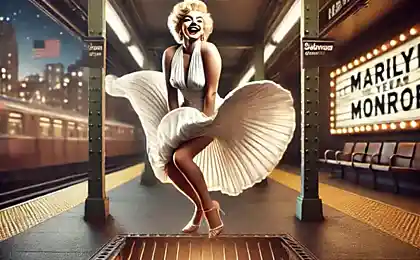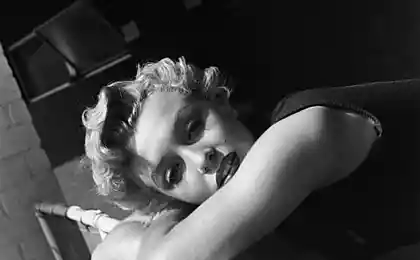230
What to do before starting a relationship
What should I do before starting a relationship? Strange question, you might say. Just find a partner. Another one. The previous one wasn't good enough. Successful. Sweet. He was jealous. Married. Infantilene. Things will be different now. Now I'll be careful. With my experience! .
But, strange thing, in a new relationship, also for some reason does not stick. We're doing our best, though. We find out relationships, we voice expectations, and, most importantly, we love them. We love you! Poisonous snake creeps in the thought that the fault of the second — trying not enough. Or maybe he doesn't. In fact, they are all the same...

In psychology, you can find the concept of “psychological age”. Which can often be different from the physical. This discrepancy can be both temporary and permanent. In the first case we are talking about regression, in the second – about infantilism. That is, in other words, either the Adult in a relationship becomes a Child (E. Byrne), or the non-adult and non-mature person enters into this relationship.
Everyone was once a child, and this image we carry with us into adulthood. In various sources and theories, two types of inner child are most commonly encountered: Happy and Traumatized (or Natural and Weeping).
A happy (holistic) child is the desired child of loving, adult and psychologically healthy parents. Such parents accepted the child, took care of him and supported, respected the child’s personality and his right to independence. This child becomes a natural adult. Growing up, he can perform all these functions in relation to himself. In other words, it is saturated (love and acceptance) and taught environmentally friendly and caring. Keeping in touch with such an Inner Child, a person is nourished by energy from this state, because in it the source of spontaneity, creativity, vitality, confidently walks through life, solves problems, makes decisions, makes choices - because he knows well what he wants. Unfortunately, not many of us had such a childhood. And not many of our parents...
A traumatized (crying) child is a child who has been subjected to various types of trauma or violence: in the worst case – physical, in the “best” – psychological. It can be lonely and rejected, abandoned and forgotten, abused, used, self-sacrificing child. The parents were either absorbed in their own sorrows and problems (hypoprotection), or excessively involved the child in their lives (hyperprotection). In the first case, the parents were cold, neglectful, selfish, in the second – anxious, controlling, overcaring. As a result, the child was filled with emotional pain and unreacted feelings and states - fear, sadness, resentment, anger, loneliness, helplessness.
In childhood, to protect the Crying and Traumatized Child (as a defense mechanism), another subpersonality may come to the scene – the Controlling Child. To get rid of emotional pain and unbearable inner tension, he seeks various means. Some of them are distracting (work, sports, obsessive care for others, computer games) are more socially acceptable. Others – painkillers (food, alcohol, medicines, sex, nicotine, gambling) – are condemned by society. In fact, both are likely to become the object of pathological addiction. Here are the roots of all dependencies.
Since the needs are still not met and the Controlling Child is no longer able to cope with his task, another character may appear - Angry and Rebel Child (a combination of Weeping and Controlling). He is overly demanding, openly expressing hostility.
With the combination of the Natural, Controlling and Weeping, the Stubborn and Selfish Child is born, he manifests his aggression not explicitly, secretly. He is manipulative, intriguing, often vindictive and inventive. He lives under the slogans: “I have the right to do this”, “I will only do what I like.” Common features of these subpersonalities are: justification of one’s behavior, blaming others, recklessness, denial of responsibility.
What's going on with these kids? They live in us adults. Such adults are always psychologically in the position of a child – undernourished, eternally hungry for love and attention, needy, dependent, demanding of others. These feelings are still relevant, they are energetically charged, and this energy needs to be released. Resentment, discontent, reproaches, claims of such an adult child are initially intended for parents, however, are presented most often to partners. As soon as we experience situations similar to childhood in real adult life, or as soon as we meet someone we care about, we act as if other people owe us something. Time and again, our Inner Wounded Child projects trauma onto the present situation, causing us to react the way a young child would react. Namely, complains, demands, whines, demands, manipulates and controls.
These subpersonalities are easily recognized in roles that are already played by adults. For example, a crying child is a clear victim. It is characterized by: the use of painkillers, chemical dependence (drugs, alcohol, etc.), a tendency to depression, flight from responsibility. More often these are creative people – artists, musicians, actors, poets.
A controlling child is usually an emotionally cold and inaccessible person. Characteristic: distractions, perfectionism, workaholism, superachievements. They live by the rules, they are guided by the pattern. Rigid, stubborn, pedantic. Take on someone else’s responsibility – “life for others” (Rescuer)
These poles are not rigid - a person can pass from one painful pole to another during his life. As a result of the lack of elaboration of the Crying Child, a person falls into an emotional trap - the so-called Karpman triangle, where he constantly changes roles - the Rescuer, the Victim and the Aggressor.
All these states/subpersonalities are good if they appear on the stage of our lives occasionally. When one of them becomes the dominant part of an adult, it leads, of course, to the destruction of the relationship. No one can be a loving and endlessly accepting parent who heals a partner’s childhood trauma. Especially if there are two such traumatized children in a relationship (and, as a rule, this happens). The result is loneliness and a never-ending expectation of magic – meeting a person who will deliver what our parents once did not give us: love, care, a sense of security and security, the recognition that you are the best.
The way out is to heal, first of all, the Crying Child, because it is this part that produces all the others. We need to help him to react to the sea of his pain, to mourn the wounds he received. It is important and necessary to accept all our parts, because among them there are no bad and good, all of them helped us survive and not collapse. Take to restore their integrity and, therefore, psychological health.
And only after working with the Inner Child, begin to gently and carefully grow a wise Adult out of him - confident, supportive, able not only to take, but also to give, responsible and making decisions. Who can build a full and loving relationship with another Adult. I wish you everything.
Based on the book by Marilyn Murray “Murray Method”
Source: intrigger.ru
Source: /users/1077
But, strange thing, in a new relationship, also for some reason does not stick. We're doing our best, though. We find out relationships, we voice expectations, and, most importantly, we love them. We love you! Poisonous snake creeps in the thought that the fault of the second — trying not enough. Or maybe he doesn't. In fact, they are all the same...

In psychology, you can find the concept of “psychological age”. Which can often be different from the physical. This discrepancy can be both temporary and permanent. In the first case we are talking about regression, in the second – about infantilism. That is, in other words, either the Adult in a relationship becomes a Child (E. Byrne), or the non-adult and non-mature person enters into this relationship.
Everyone was once a child, and this image we carry with us into adulthood. In various sources and theories, two types of inner child are most commonly encountered: Happy and Traumatized (or Natural and Weeping).
A happy (holistic) child is the desired child of loving, adult and psychologically healthy parents. Such parents accepted the child, took care of him and supported, respected the child’s personality and his right to independence. This child becomes a natural adult. Growing up, he can perform all these functions in relation to himself. In other words, it is saturated (love and acceptance) and taught environmentally friendly and caring. Keeping in touch with such an Inner Child, a person is nourished by energy from this state, because in it the source of spontaneity, creativity, vitality, confidently walks through life, solves problems, makes decisions, makes choices - because he knows well what he wants. Unfortunately, not many of us had such a childhood. And not many of our parents...
A traumatized (crying) child is a child who has been subjected to various types of trauma or violence: in the worst case – physical, in the “best” – psychological. It can be lonely and rejected, abandoned and forgotten, abused, used, self-sacrificing child. The parents were either absorbed in their own sorrows and problems (hypoprotection), or excessively involved the child in their lives (hyperprotection). In the first case, the parents were cold, neglectful, selfish, in the second – anxious, controlling, overcaring. As a result, the child was filled with emotional pain and unreacted feelings and states - fear, sadness, resentment, anger, loneliness, helplessness.
In childhood, to protect the Crying and Traumatized Child (as a defense mechanism), another subpersonality may come to the scene – the Controlling Child. To get rid of emotional pain and unbearable inner tension, he seeks various means. Some of them are distracting (work, sports, obsessive care for others, computer games) are more socially acceptable. Others – painkillers (food, alcohol, medicines, sex, nicotine, gambling) – are condemned by society. In fact, both are likely to become the object of pathological addiction. Here are the roots of all dependencies.
Since the needs are still not met and the Controlling Child is no longer able to cope with his task, another character may appear - Angry and Rebel Child (a combination of Weeping and Controlling). He is overly demanding, openly expressing hostility.
With the combination of the Natural, Controlling and Weeping, the Stubborn and Selfish Child is born, he manifests his aggression not explicitly, secretly. He is manipulative, intriguing, often vindictive and inventive. He lives under the slogans: “I have the right to do this”, “I will only do what I like.” Common features of these subpersonalities are: justification of one’s behavior, blaming others, recklessness, denial of responsibility.
What's going on with these kids? They live in us adults. Such adults are always psychologically in the position of a child – undernourished, eternally hungry for love and attention, needy, dependent, demanding of others. These feelings are still relevant, they are energetically charged, and this energy needs to be released. Resentment, discontent, reproaches, claims of such an adult child are initially intended for parents, however, are presented most often to partners. As soon as we experience situations similar to childhood in real adult life, or as soon as we meet someone we care about, we act as if other people owe us something. Time and again, our Inner Wounded Child projects trauma onto the present situation, causing us to react the way a young child would react. Namely, complains, demands, whines, demands, manipulates and controls.
These subpersonalities are easily recognized in roles that are already played by adults. For example, a crying child is a clear victim. It is characterized by: the use of painkillers, chemical dependence (drugs, alcohol, etc.), a tendency to depression, flight from responsibility. More often these are creative people – artists, musicians, actors, poets.
A controlling child is usually an emotionally cold and inaccessible person. Characteristic: distractions, perfectionism, workaholism, superachievements. They live by the rules, they are guided by the pattern. Rigid, stubborn, pedantic. Take on someone else’s responsibility – “life for others” (Rescuer)
These poles are not rigid - a person can pass from one painful pole to another during his life. As a result of the lack of elaboration of the Crying Child, a person falls into an emotional trap - the so-called Karpman triangle, where he constantly changes roles - the Rescuer, the Victim and the Aggressor.
All these states/subpersonalities are good if they appear on the stage of our lives occasionally. When one of them becomes the dominant part of an adult, it leads, of course, to the destruction of the relationship. No one can be a loving and endlessly accepting parent who heals a partner’s childhood trauma. Especially if there are two such traumatized children in a relationship (and, as a rule, this happens). The result is loneliness and a never-ending expectation of magic – meeting a person who will deliver what our parents once did not give us: love, care, a sense of security and security, the recognition that you are the best.
The way out is to heal, first of all, the Crying Child, because it is this part that produces all the others. We need to help him to react to the sea of his pain, to mourn the wounds he received. It is important and necessary to accept all our parts, because among them there are no bad and good, all of them helped us survive and not collapse. Take to restore their integrity and, therefore, psychological health.
And only after working with the Inner Child, begin to gently and carefully grow a wise Adult out of him - confident, supportive, able not only to take, but also to give, responsible and making decisions. Who can build a full and loving relationship with another Adult. I wish you everything.
Based on the book by Marilyn Murray “Murray Method”
Source: intrigger.ru
Source: /users/1077























